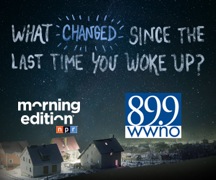Civil Rights Era dream of economic inclusion for N.O. Blacks not realized
30th April 2018 · 0 Comments
By Charmaine Jackson
Contributing Writer
In commemoration of New Orleans’ 300th anniversary, staffers Allison Plyer and Lamar Gardere of The Data Center released The New Orleans Prosperity Index: Tricentennial Edition, a report which examines the history of the city with respect to African Americans and economic inclusion.
More specifically, this edition of The Prosperity Index explores the question: “Have African Americans in New Orleans experienced increased economic inclusion since the end of the Civil Rights era?”
Multiple indicators, such as employment and income, housing, democracy, health, education and criminal justice were analyzed to “assess the city’s prosperity and resilience potential and reveals areas of strength and weakness across multiple systems.”
In the areas of employment and income, there are reports of growth for white men and women and Black women, but not for Black men, which has been attributed to high incarceration rates.
“Since 1980, employment rates have risen slightly for white men in New Orleans from 76 to 79 percent in 2016 and have expanded for white women from 55 to 74. Employment rates for Hispanic women have risen from 53 to 67 percent. For Black women, employment rates have grown from 48 to 59 percent. Only for Black men have employment rates fallen from 63 percent in 1980 down to 52 percent in 2016,” the report stated.
According to MIT, a living wage, which would allow a family of one adult and one child to subsist without government assistance in New Orleans, was $22.89 per hour or $47,611 in 2016. A total of 60,500 Black households earned less than 45,000 in New Orleans in 2016.
Black household incomes show a stark difference, compared to white household incomes. Per the report, New Orleans’ white household’s highest income quintile expanded from 24 percent in 1979, such that by 2016, 29 percent of white households earned more than $114,632. In contrast, the share of Black households in this tier shrank from nine percent in 1979 to six percent in 2016. Instead, the share of Black households in the lowest tier grew from 41 percent, such that by 2016, 47 percent of Black households earned less than $23,237.
In place of port jobs, the tourism industry in New Orleans has produced more than 15,000 jobs, but still fails to provide what the index report considers “family-sustaining wages.” Blacks comprise 50 percent of the workforce and the average wages, including tips, is only $34,220. Conversely, 47 percent of Blacks that work in healthcare earn higher wages, averaging $49,748.
African-American business ownership in New Orleans has increased, from 21 percent in 1997 to 40 percent in 2012; however, their receipts have remained stagnant at roughly two percent over that time frame, the report notes.
As for home ownership, the index findings reveal African Americans have progressed, but a large number are still renters. For instance, there are only 41 percent of Black New Orleanian homeowners, compared to 54 percent white New Orleanian homeowners; thereby, 60 percent of New Orleanians rent. In addition, more than half of all renters paid unaffordable costs for housing in 2016, compared to 41 percent of renters nationwide who pay unaffordable rents.
Moreover, Black New Orleanians have seen improvements in healthcare coverage, but due to bias in health care delivery and the body’s chronic stress response to racism, their overall health is poorer than white New Orleans mothers.
In 2015, 15 percent of Black New Orleanian mothers, with a master’s degree or higher, gave birth to low weight babies, compared to only 7.3 percent of white New Orleans mothers.
In 2016, while the number of Blacks without health insurance has decreased from 37 percent to 14 percent, 56 percent of Blacks are still more likely to die from cancer or heart disease and 49 percent more likely to die of stroke than whites.
The analysis also scopes the lack of progress for African-American students in New Orleans, in both private and public schools, and discovered African-American students who graduated from public schools, in 2017, averaged 17.6 on the ACT, while students in private schools averaged a score of 17.2, compared to white students, who averaged scores of 25.2 and 25.3 in public and private schools, respectively.
Thus, the index concluded the New Orleans K-12 education pipeline — both public and private — is not preparing many African-American students with the skills needed to succeed in college.
While college education has grown since 1980 for adults in New Orleans in general, as of 2016, only 55 percent of Black women and 42 percent of Black men had some college education, compared to 85 percent of white men and women.
Overall, The Prosperity Index concludes that after the Civil Rights Era, the dream of economic inclusion for African-American New Orleanians has not been fully realized. They advise the implementation of “innovative new policies and practices that put the region on a solid path toward an inclusive economy.”
To read the full report, visit: https://www.datacenterresearch.org.
This article originally published in the April 30, 2018 print edition of The Louisiana Weekly newspaper.



